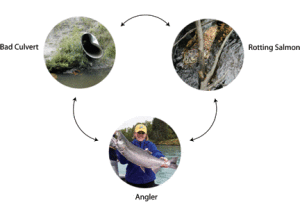
Answer: This culvert blocked that fish from laying a thousand or more eggs, which hurts our local economy by reducing the number of happy anglers.
Why did the salmon cross the road?
When speaking of salmon, it is no joke. The salmon crossed the road to gain access to better food and safe cover.
A single road crossing with an inadequate culvert can prevent fish from reaching miles of otherwise pristine habitat. Small streams connect fish to their nurseries.
Juvenile salmon, particularly Coho, migrate up streams. Studies have shown that juveniles that successfully migrate up and down small streams survive better in the ocean. It is important to keep streams free of barriers.
Culvert Assessment
Our team routinely and systematically assesses all known road and trail crossings of salmon streams. Working with the Alaska Department of Fish and Game and the U.S. Fish and Wildlife Service, KWF is constantly evaluating culverts for fish passage. Those that are found to be inadequate under common flow conditions are prioritized for restoration.
What is an Inadequate Culvert?
There are a number of factors that can keep a fish from being able to pass through a culvert. A drop or “perch” of the culvert outlet more than 4-inches prohibits juvenile fish from passage. A steep culvert or narrow culvert also creates conditions that can make fish passage impossible.
We have been assessing culverts across the entire Kenai Peninsula for the past 15 field seasons. By combining our results with previous surveys by Alaska Department of Fish & Game, a total of 517 stream crossings have been identified. Of these crossings, 270 are culverts crossing state cataloged salmon streams while the remaining are bridges, dams, weirs, or ATV trails. Of the 270 culverts assessed, a total of 48 (18%) provide adequate passage, 93 (34%) provide marginal passage, and 129 (48%) provide inadequate passage.


